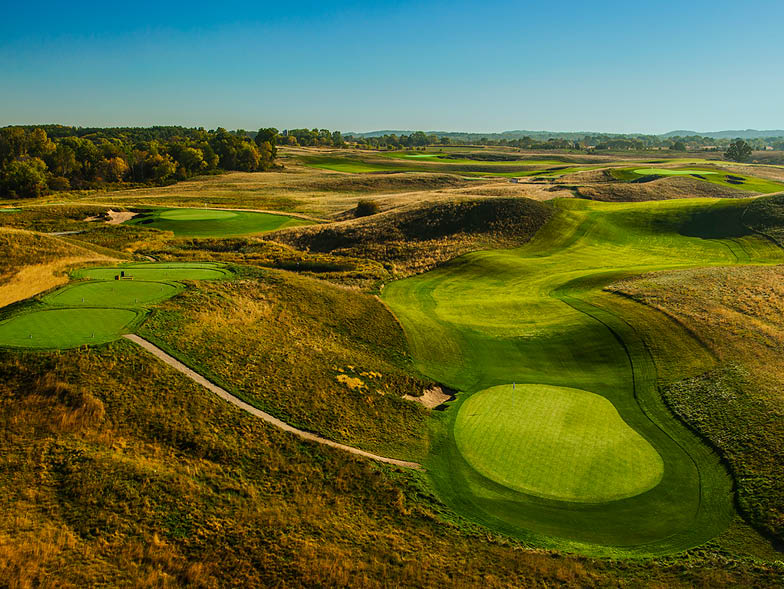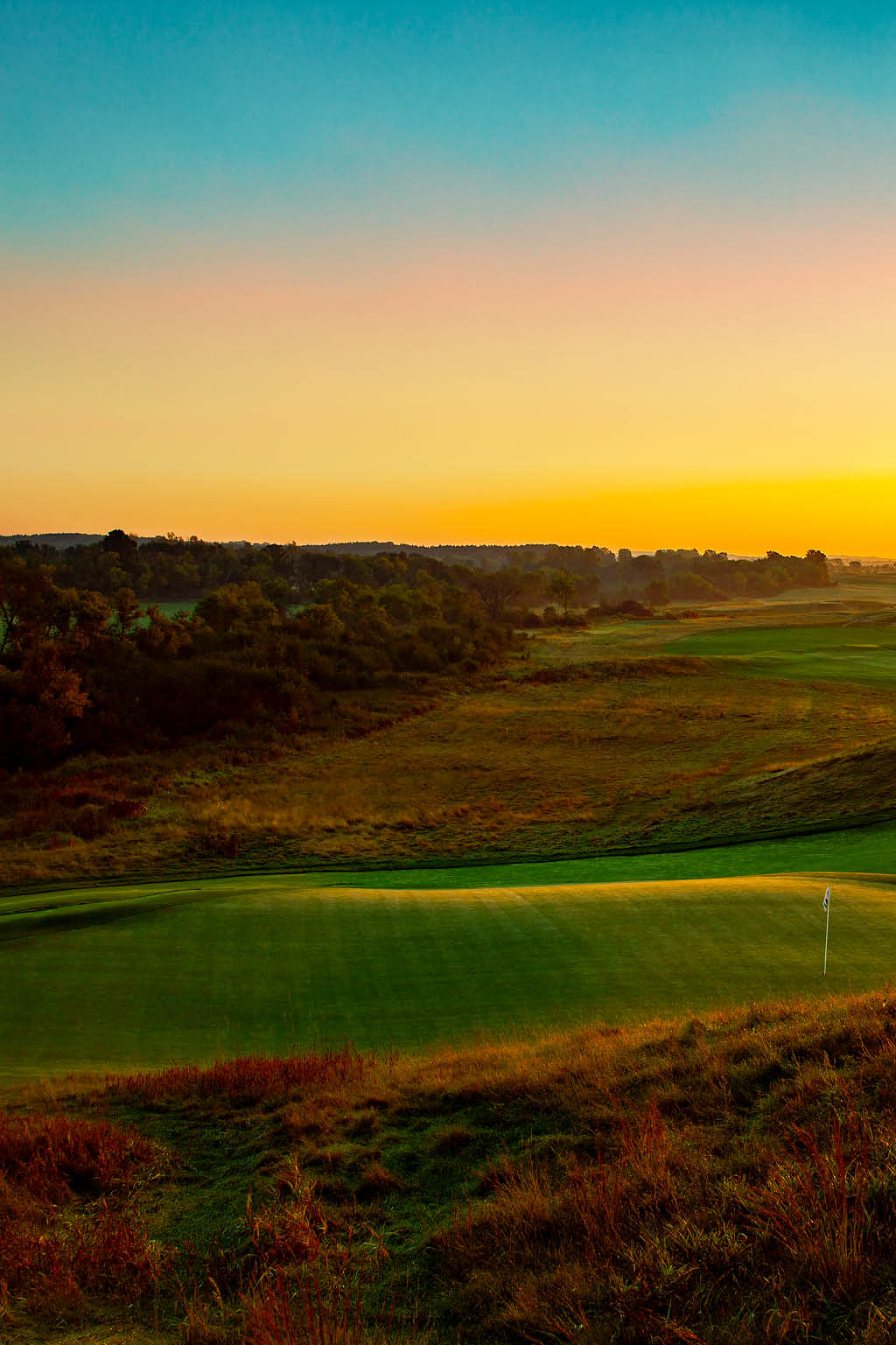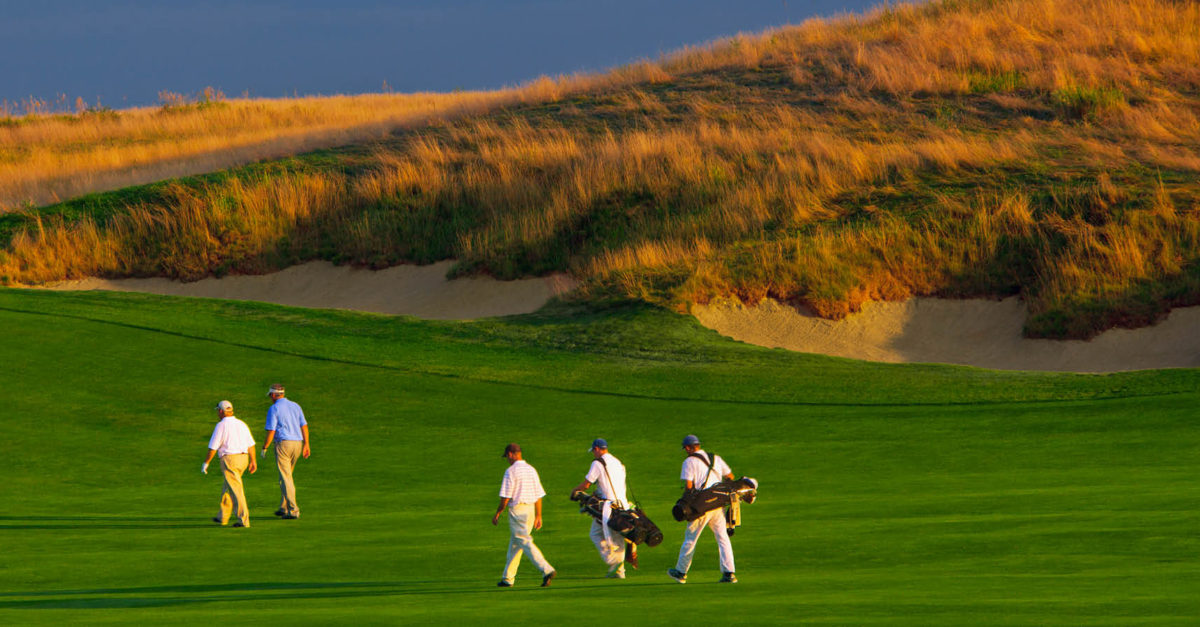Birdies in the Badger State
Like many people across the country, my dad, Jerry, absolutely loves golf. He caddied during summers beginning in his preteen years, and he’s been golfing ever since—well over fifty years now. As a scratch golfer at best, I’ve golfed with him occasionally over the years, but we’ve spent many hours at the driving range together. Some of my favorite memories growing up are of watching him strike high, majestic tee shots that pierced through the sky.
On top of that, my dad loves watching golf. Without fail, if we visit him on the weekend, we’ll find him in his easy chair glued to the golf on television. He lives and breathes the sport, and my brothers and I enjoy watching it with him.
The other day, we were talking about the best places that he’s golfed, including Myrtle Beach, South Carolina, and Ocean City, Maryland. However, when I brought up golfing in the Midwest, namely in a place like Wisconsin, he admitted that he had never considered it.
He’s probably not alone in that sentiment. When it comes to Wisconsin sports, golf may not be the first thing that pops into your mind. It’s known for many sports teams, most notably the legendary Green Bay Packers football team, but also Milwaukee’s Brewers and Bucks, and even the University of Wisconsin Badgers in the state’s capital, Madison.
The fact is, though, that golf is wildly popular in the state as well. In fact, in recent years, golf publications have consistently put the Badger State near or inside the top ten best states to golf in the country. With over five hundred courses available—many of them public—it’s no wonder it’s become a golfer’s go-to destination. And it’s actually been this way for over a century.

The state’s rich golf history began back in 1894, when its first club, Sinnissippi Golf Club, was established. That club—only the sixth in the United States at the time and the second in the Midwest—later became Janesville Country Club, which still welcomes golfers to its lush course today. In 1901, the Wisconsin State Golf Association was organized to promote golf from the junior level to the pros, all while making it much easier for golf courses to open across the state.
In the past half-century, Wisconsin has been home to many well-known golf events. It regularly hosts junior, women’s, and senior PGA events. The 2012 U.S. Women’s Open was held at Blackwolf Run in Kohler. And The Straits at Whistling Straits, a Pete Dye-created course in Sheboygan, has hosted the PGA Championship three times—most recently in 2015, when Jason Day scorched the course with a championship-record-low of 20-under-par to outlast Jordan Speith by three strokes (which I watched unfold live with my dad and my brother Scott.)
And now the spotlight shines again on the Wisconsin golf scene, with the U.S. Open coming to the state for the first time in the major’s illustrious 117-year history. The world’s leading golfers are descending on Erin Hills Golf Course, a public course located in a small, rural, centuries-old town called Erin that’s located approximately thirty-five miles northwest of Milwaukee in Washington County.
Erin Hills opened in 2006 and within a few years was hosting notable golf events like the 2008 U.S. Women’s Amateur Public Links Championship and the 2011 U.S. Amateur Championship. The course itself
was created by architects Michael Hurdzan, Dana Fry, and Ron Whitten, but much of the credit should go to Mother Nature, according to Erin Hills Competition Director John Morrissett. “This architect team went to great lengths to show restraint in designing and building the course,” he explains. “This wonderful stretch of terrain is set in Wisconsin’s Kettle Moraine region on undulating land left by two glaciers that collided and then receded 10,000 years ago. Because of this, the architects wanted to highlight the natural features and move only the barest minimum of earth.” Thanks to their minimalistic efforts, only four of Erin Hills’ holes were altered at all—and, at those holes, it was for the sake of creating bunkers.
This abundant natural topography, although beautiful, can also present strategic challenges for golfers for a variety of reasons—not the least of which is found in the course name itself. “Erin Hills will keep the players on their toes with a variety of uphill, downhill, and sidehill slopes that will need to be considered,” Morrissett continues. “There is also the occasional blind or semiblind shot that will require good course knowledge.
“In addition, the architects used the hills to especially good effect in picking green sites, with, for example, the twelfth green nestled in a natural depression between a large hill and a small hill, while the fifteenth green sits atop a ball-repelling hill. The topography also plays a strategic role with the fairways; for instance, there’s a ‘speed slot’ in the tenth fairway that can give players an additional forty yards of roll.”

The overall effect of the topography is more than just strategic, however. Jeff Hall, USGA Managing Director of Rules and Open Championships, notes that “The rolling nature of the land and the fact that several tees and greens are perched up on hills will add to the overall physical demands on the players. It is a big golf course, and the walk reflects that fact.”
How big? “The scorecard yardage will be 7,693 yards,” Hall adds, with a caveat. “However, this yardage figure can be a bit misleading on two fronts: first, at Erin Hills, the U.S. Open will play to a par of 72 for the first time since 1992 and there will be four par-5 holes; and, second, Erin Hills provides tremendous flexibility with the setup. We will use a variety of tee positions and hole locations such that our overall yardage will not likely exceed the scorecard yardage.”
If you’re planning to attend the championship at Erin Hills, bring your most comfortable sneakers, and plan for warm (high 70s, on average) but possibly windy weather—which is great for spectators but a mixed blessing for the golfers. Zach Reineking, superintendent of Erin Hills, notes that rainfall averages are only three and a half inches per month from June through September. The true challenge is the wind. “Erin Hills is most often impacted by strong winds, especially from April to June, and in the fall,” says Reineking. “With limited trees to provide a wind break, Erin Hills can experience sustained 10–15 mile-per-hour winds, with gusts exceeding 25 miles per hour or more.” Worse, he says that “there isn’t a true prevailing wind during the spring, and it is also common for the direction to change during the day.” For golfers, Hall says, this can be particularly challenging: “With the absence of trees, the wind can play a big factor in shotmaking. In June, it would not be unusual to have wind coming from different directions each day of the championship.”
Counterbalancing the possibly tricky winds is the pristine condition of the course itself. “The fairways and green surrounds primarily are a combination of fescue and perennial ryegrass turf and should provide the firm and fast conditions that we desire if the weather is in our favor,” says Hall, who also notes that “the putting greens are bent grass, and will offer excellent putting surfaces.”

That doesn’t mean, however, that there aren’t holes that are thornier than others. Just like with any other U.S. Open, certain holes are designed to have the pros earn their pars, and that begins at the fourth hole. “Even though it is modest in length, the par-4 fourth hole features one of the tighter tee shots on the course, followed by one of the more precise approaches, with a bunker and a false front short of the shallow green and a wetland beyond,” explains Morrissett, who also cites the final hole of the front nine as another challenge: “While the shortest hole on the course, the par-3 ninth hole is completely exposed to the elements as it drops from tee to green. The players will need to be able to control the flight of their tee shots to find this narrow target ringed by some of the more punishing bunkers on the course.”
Even better for golf fans, the back nine also offers holes that may make or break the leaderboard, according to Hall. “The five finishing holes offer a unique opportunity for a U.S. Open setup,” he notes. “With two par-5s and a very short par-4 among the final five holes, there are three opportunities for potential two-shot swings (either a birdie or a bogey). We could see a player make up two to three strokes in this five-hole stretch on Sunday afternoon. So, even what appears to be a relatively easy hole on the scorecard, such as fourteen, fifteen, or eighteen, can result in an eventual bogey if a player gets slightly out of play with any stroke.”
Since 2010, Erin Hills and the USGA have been planning this unique joint venture, transforming an already popular and lauded course into a major golf event—all while keeping the essence of the course intact. “We certainly learned quite a bit about how expert players might play the course through the 2011 U.S. Amateur,” says Hill. “Since that championship, the primary change has been the relocation of the putting green on the third hole. The focus inside the ropes since 2011 has been toward incremental improvement on the overall agronomics of the golf course. Zach and his team have done a fantastic job in that regard!”
Hall also provides perhaps the best summary of what fans can expect of this new U.S. Open setting. “Erin Hills is a very interesting golf course,” he muses. “When firm and fast, there are several opportunities to play the ball along the ground as would be the case at a typical British links-style course, but Erin Hills also has a number of shots where playing in the air will be required. As a result of the architecture, weather conditions, turf conditions, and setup, the golf course will offer a complete examination for the best players in the world.”
Beautiful, natural architecture and exquisitely groomed fairways and greens are mixed with challenging conditions for the best players in the world—all in the heart of Wisconsin, an underestimated gem of a golf state.
The rolling landscape of Erin Hills provides just the sort of setting that will make for some memorable television viewing for millions of golf fans—including, once again, my dad and me.
For more info, visit erinhills.com.






















